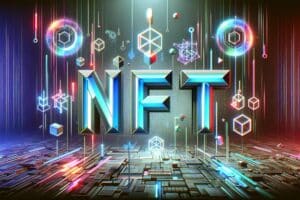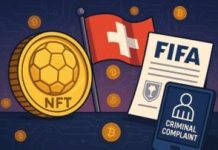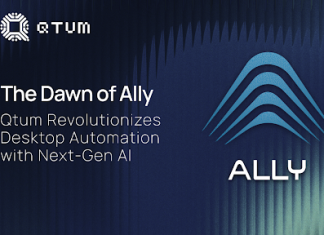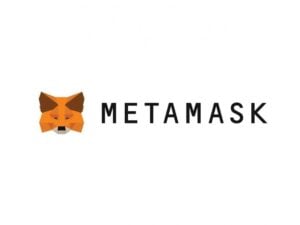Recently, an analysis was conducted extracted from the book “The Everything Token”, which retraces and analyzes the universe of NFTs.
In their recent work, Steve Kaczynski and Scott Duke Kominers explore the current challenges and possible solutions related to diversity, regulation, and decentralization within the NFT ecosystem.
Let’s see below all the details.
Diversity, regulation, and decentralization: the main themes of NFTs
As anticipated, the complex system of NFTs is explored within the book “The Everything Token“.
Starting from the basics, let’s see how it is explained that the blockchain platforms at the core of the NFT revolution, similar to the decentralized structure of the Internet, rely on the processing of transactions to decentralized networks of computers.
In this way they guarantee the security of the blockchain against censorship and centralized control. However, this approach results in high costs both at the network and user level.
In the first quarter of 2022, Ethereum, the predominant blockchain for the creation and exchange of NFTs, accounted for 0.34% of the global daily energy consumption.
Its transition to a new transaction processing system, proof-of-stake (POS), has significantly reduced the environmental impact, but transaction costs remain a problem.
For example, sending an NFT to a friend could cost a dollar or more, making it prohibitive for many daily transactions.
Although one dollar may seem reasonable for shipping physical goods, for digital assets it is an exorbitant cost. Transaction fees, which increase with network activity, can indeed become excessive during peak hours.
Furthermore, the limited capacity of the blockchain to handle large quantities of transactions creates inefficiencies, especially when compared to networks like Visa or Mastercard.
Fortunately, solutions are being developed to address these challenges.
Improvements in blockchain infrastructure and the adoption of fast processing techniques followed by a consolidated settlement transaction are increasing efficiency.
These innovations reduce the marginal costs of transactions, paving the way for a future in which the blockchain can compete in terms of speed and costs with traditional transaction technologies, similar to the evolution of cloud computing infrastructure.
Accessibility and security
Parallel to the NFT revolution, accessibility and usability present significant challenges.
Initially, consumers’ digital wallets interacted directly with the blockchain, requiring advanced technological understanding and exposing users to potential errors.
Buying an NFT could involve direct interaction with the source code, highlighting the need for more intuitive interfaces.
The immediacy of crypto transactions, similar to sending an email, carries risks.
Errors in the address can cause irreversible losses, while hacking or compromising the account can lead to theft of digital assets. For example, in 2021, the theft of NFT Bored Ape has become common, becoming a widespread meme.
The granular data management and privacy represented additional challenges. Even though the wallets gave users control over which platforms could interact with their assets, the level of access was often binary.
In 2023, the data of digital assets were often completely public on the blockchain, limiting the use of NFTs in privacy-sensitive applications such as healthcare.
However, solutions were in the development phase, led by wallet service providers who saw benefits in improved accessibility and security.
Progress was reflected in the launch of collectible avatars from Reddit in 2022, where purchasing NFTs was so simple that many users had no idea they were interacting with a blockchain.
At the same time, Web3 solutions were being developed to manage identities and data with greater privacy and user control.
Regulation of NFTs and evolutionary challenges
NFTs, as a new class of assets, raise questions about regulation.
Determining the nature of an NFT can be complex, as it varies depending on the format and specific functionalities.
While some NFTs simply represent ownership of digital artworks or collectibles, others have complex features, challenging traditional categories such as commodities and securities.
The focus of Web3 on decentralized access and user control promises to revolutionize power hierarchies.
However, this raises crucial questions about regulation, especially for NFTs with features of commodities and securities, generating regulatory and political challenges.
The evolution of NFTs, which can acquire new functionalities over time, complicates the regulatory puzzle.
For example, if an NFT started as a record of ownership and later distributed dividends, should it be treated as a commodity or a security? This raises questions about registration processes, disclosure, and customer identity tracking.
In addition to the specific challenges of NFTs, the broader cryptographic ecosystem faces questions regarding consumer protection and interaction with existing intellectual property laws.
In conclusion, regulation must adapt to the constantly evolving dynamics of NFTs to address the complex intersections between technological innovation and traditional laws.
Between decentralization and centralization: the evolving web3
To conclude, the analysis observes that the true extent of decentralization supported by Web3 still remained to be determined.
The fear arose that, despite efforts to decentralize, the need to aggregate computational and storage resources could ultimately lead to an underlying centralization, undermining the very philosophy of NFTs and digital assets.
In the same way, concerns were raised about the risk of platform centralization and market power, similar to the dynamics of Web2.
The evolution of Web3 raised the possibility of a new form of centralization focused on platforms with superior user experiences, potentially driven by Web2 giants.
The evolution of Web3 raised the possibility of a new form of centralization focused on platforms with superior user experiences, potentially driven by Web2 giants.
For example, the transformation of Facebook into Meta indicated an attempt to lead in the Web3 sector.
Some cases of centralization emerged in the early NFT market, where several platforms relied on OpenSea to display images associated with NFTs.
However, these dynamics were changing thanks to new competitors who were leveraging the public transparency of blockchain transactions to attract active traders.
However, the rise of OpenSea competitors demonstrated that decentralization was influencing the market structure.
This indicated that user control over their own digital assets was effectively contributing to reducing the dominance of individual platforms.
In the world of Web2, the entry of giants like X (formerly Twitter) into Web3 implies the need to adapt to new models of data control, opening the doors to interconnection and uploading private data without giving up control.









